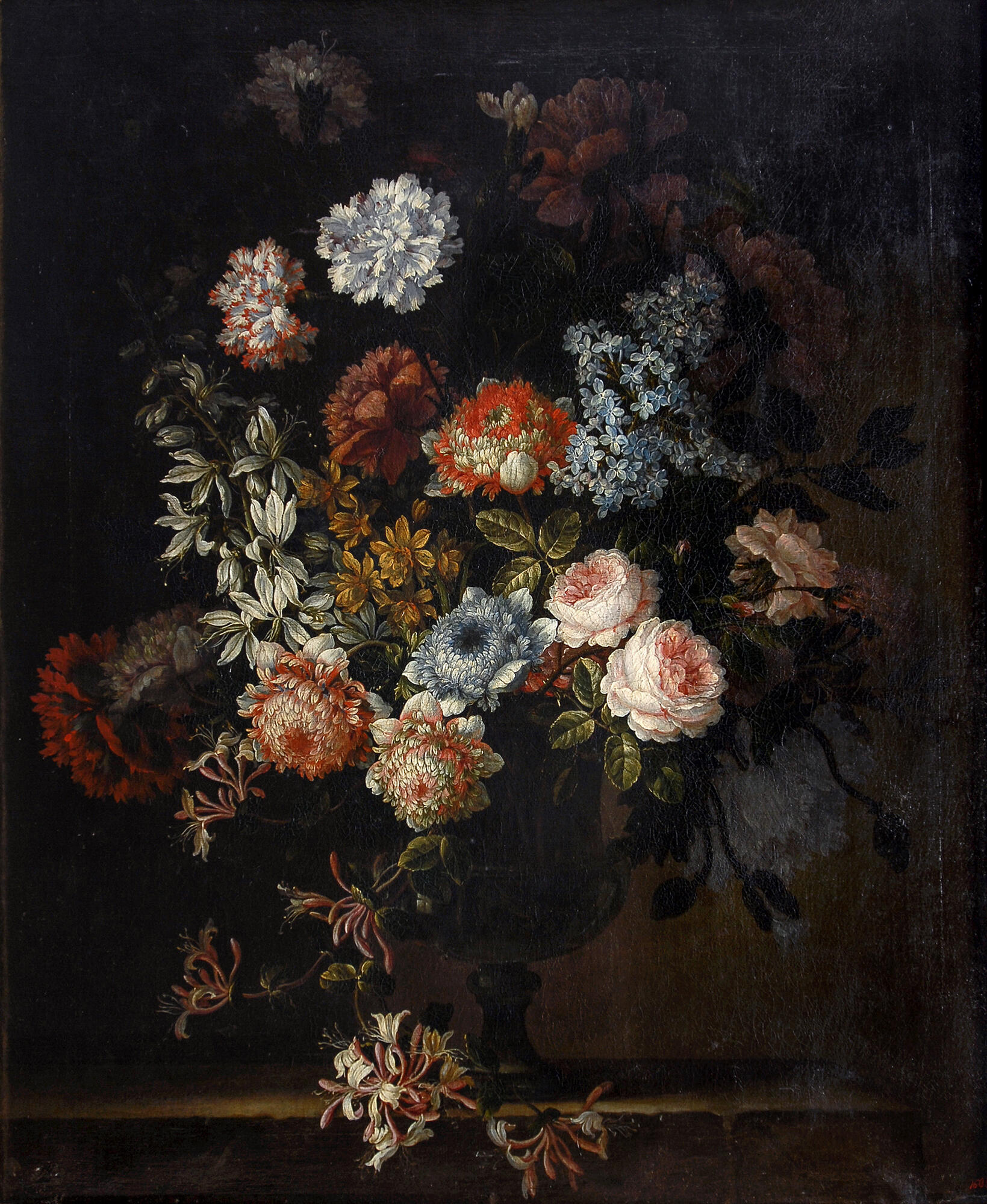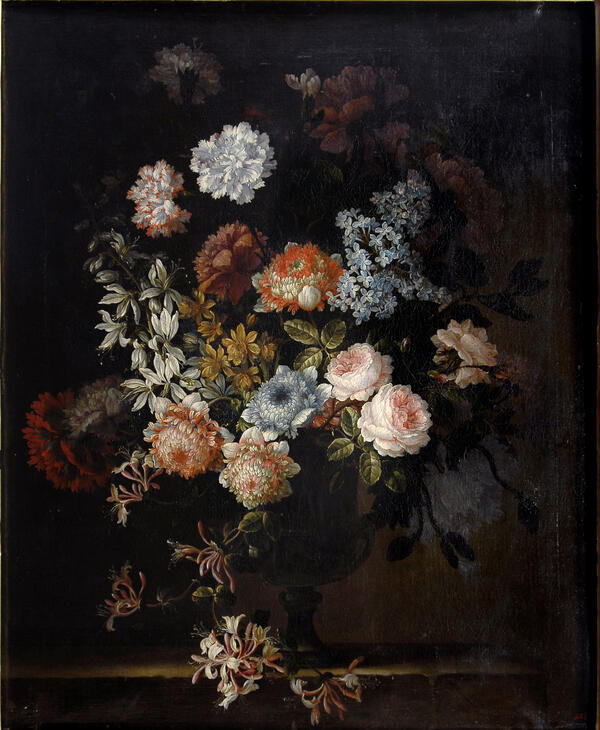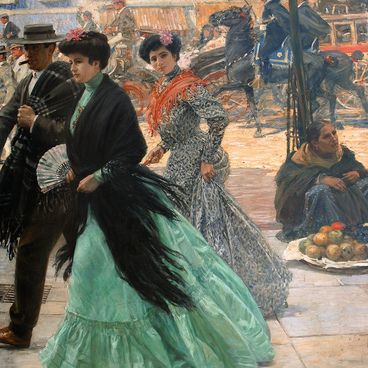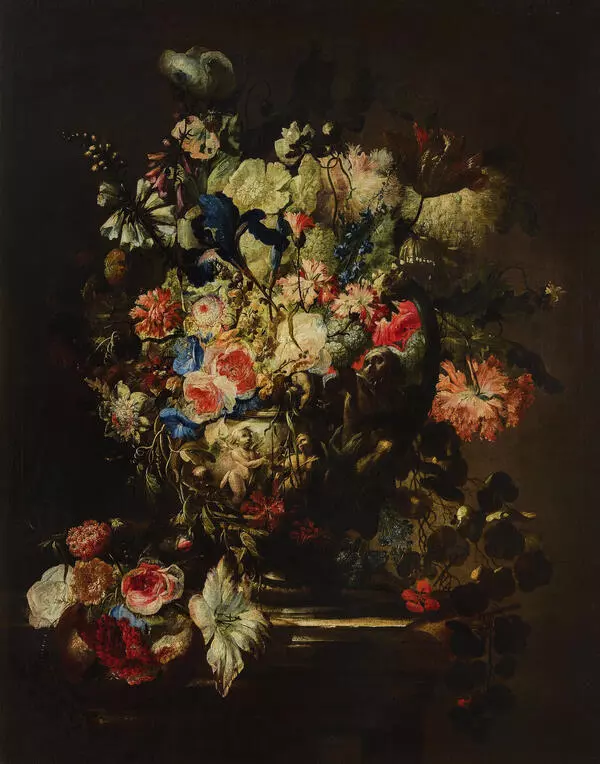In French art, the golden age of still life emerged later than in Holland, Flanders, or Italy — in the 18th century. At the turn of the century, the French artist Jean-Baptiste Monnoyer, among others, worked in the genre of floral still life. His still life “Flowers” is displayed in the collection of the Primorye Art Gallery.
Monnoyer was born in the French city of Lille. In Antwerp, he studied history painting but later chose the still-life genre as his principal area of interest. It is known that as early as 1650, Monnoyer was in Paris, where he proved himself as a master in the depiction of flowers. In 1665, he was admitted to the Royal Academy of Painting and Sculpture. Monnoyer assisted another French artist — Charles Le Brun, one of the most important representatives of the “Louis XIV style” — in painting the interiors of the Marly Palace and the Meudon Castle. Monnoyer rarely signed and dated his paintings, occasionally leaving just a brief signature — “M. Baptiste”; accordingly, his contemporaries more often referred to him simply as Baptiste.
In 1685, the artist moved to London at the invitation of the English ambassador to France, Lord Montague, to work as a decorator. As a diplomat, Lord had visited Paris and been impressed by the works of Monnoyer, after which he invited the artist to decorate his estate in the French manner. For Montague, Jean-Baptiste Monnoyer created more than fifty works depicting flowers and fruits, which decorated the spaces above fireplaces and doors.
Monnoyer worked at the Gobelins Manufactory, his works serving masters of applied art for decades: the artist’s still lifes were used for engravings, which were, in their turn, used to make tapestries. Jean-Baptiste’s son Antoine Monnoyer (also known as Baptiste Jr.) followed in his father’s footsteps.
The researchers note that the French still life is ornate, elegant, and characterized by the lightness of colors. These are the qualities that can also be noticed in the work of Jean-Baptiste Monnoyer. The still life “Flowers” from the collection of the Primorye Art Gallery is a characteristic work of the artist: here, flowers in a marble vase are depicted with botanical accuracy. Artistically, Jean-Baptiste Monnoyer was clearly influenced by the “painter of flowers and fruits” Davidsz de Heem.
Monnoyer was born in the French city of Lille. In Antwerp, he studied history painting but later chose the still-life genre as his principal area of interest. It is known that as early as 1650, Monnoyer was in Paris, where he proved himself as a master in the depiction of flowers. In 1665, he was admitted to the Royal Academy of Painting and Sculpture. Monnoyer assisted another French artist — Charles Le Brun, one of the most important representatives of the “Louis XIV style” — in painting the interiors of the Marly Palace and the Meudon Castle. Monnoyer rarely signed and dated his paintings, occasionally leaving just a brief signature — “M. Baptiste”; accordingly, his contemporaries more often referred to him simply as Baptiste.
In 1685, the artist moved to London at the invitation of the English ambassador to France, Lord Montague, to work as a decorator. As a diplomat, Lord had visited Paris and been impressed by the works of Monnoyer, after which he invited the artist to decorate his estate in the French manner. For Montague, Jean-Baptiste Monnoyer created more than fifty works depicting flowers and fruits, which decorated the spaces above fireplaces and doors.
Monnoyer worked at the Gobelins Manufactory, his works serving masters of applied art for decades: the artist’s still lifes were used for engravings, which were, in their turn, used to make tapestries. Jean-Baptiste’s son Antoine Monnoyer (also known as Baptiste Jr.) followed in his father’s footsteps.
The researchers note that the French still life is ornate, elegant, and characterized by the lightness of colors. These are the qualities that can also be noticed in the work of Jean-Baptiste Monnoyer. The still life “Flowers” from the collection of the Primorye Art Gallery is a characteristic work of the artist: here, flowers in a marble vase are depicted with botanical accuracy. Artistically, Jean-Baptiste Monnoyer was clearly influenced by the “painter of flowers and fruits” Davidsz de Heem.




